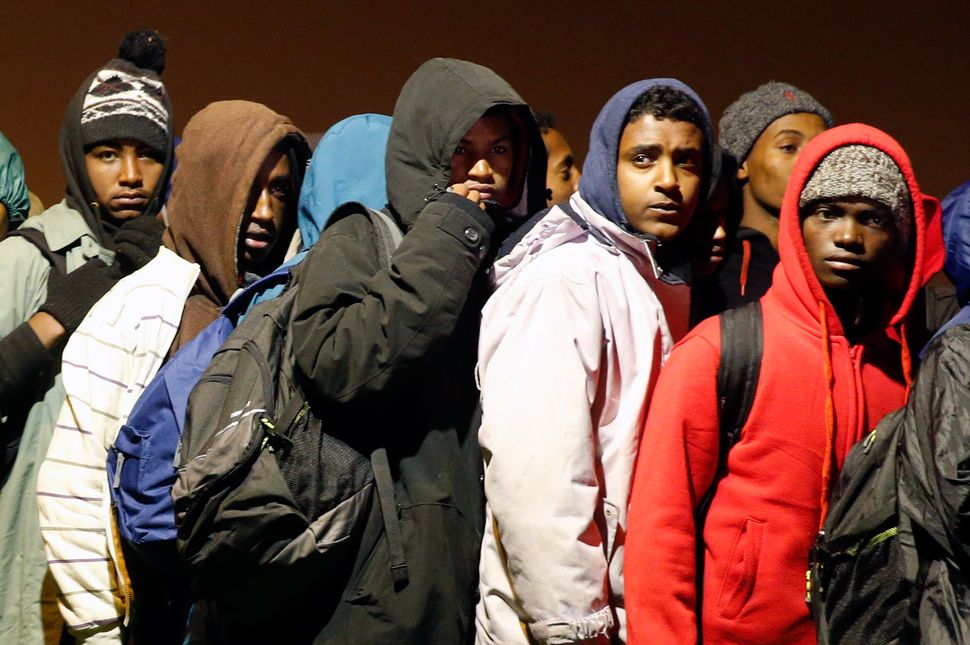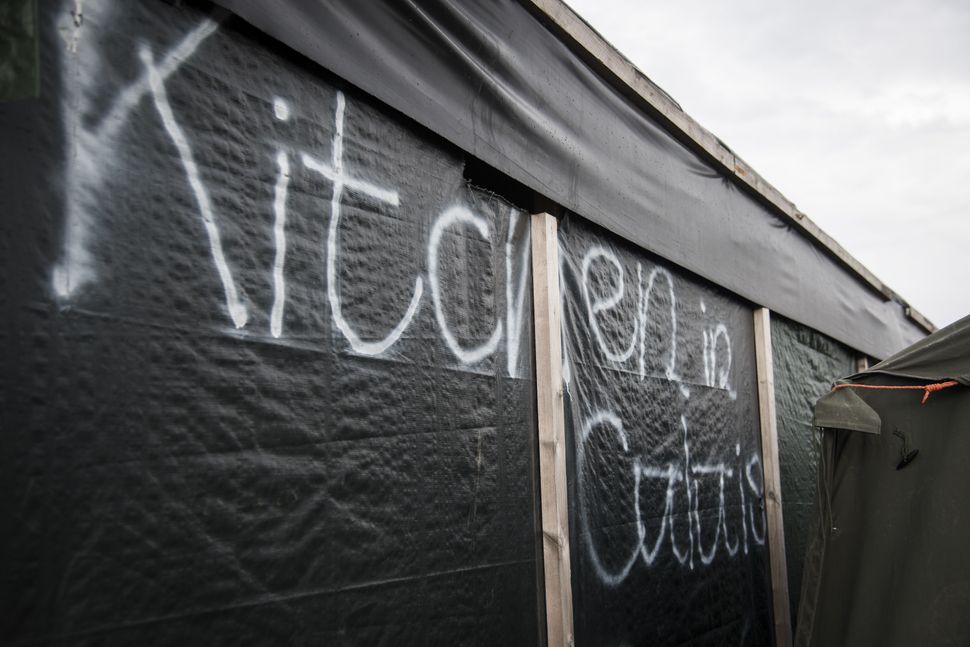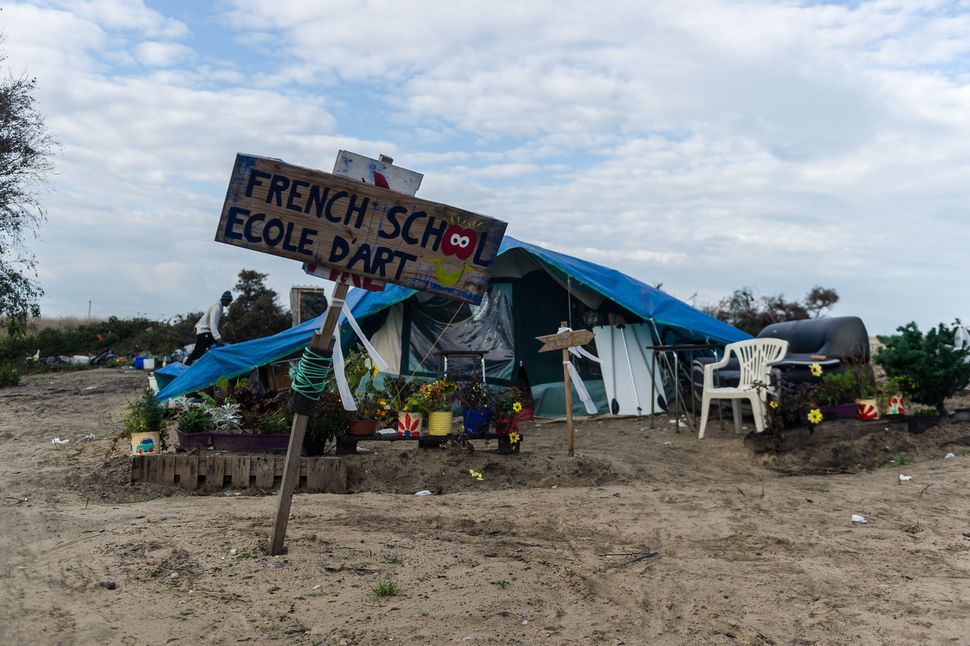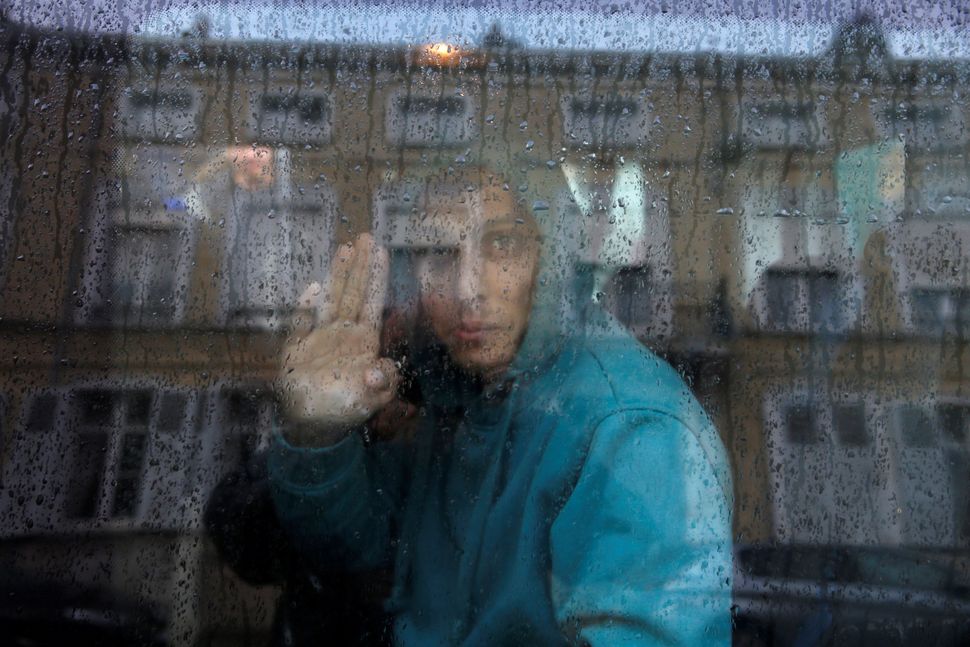Thousands of people have no idea where they will end up.
Armed police began Monday to clear out residents from the sprawling refugee camp in Calais, France, that had become a temporary home for as many as 10,000 refugees and migrants. Although living conditions could be squalid in the camp dubbed the “Jungle,” people had organized schools, bars, restaurants and shops.
The camp’s residents, mainly from Africa and Asia, were biding their time in Calais as they looked for ways to cross the Channel into the United Kingdom.
But French authorities say they decided last month to shut down the entire camp because conditions had become too dreadful and because the ongoing illegal attempts to reach the U.K. were too dangerous. Authorities dismantled half of the Jungle in February, yet its population had swelled in the months since. The remainder of the camp is expected to be demolished later this week.
Now, thousands of people living at the site will be bused across France to stay in temporary, government-run “welcome centers” while they apply for asylum. Some 1,918 adults were transferred to 80 different welcome centers on Monday, interior minister Bernard Cazeneuve said in a news conference.

The French government has built 450 of these welcome centers since last year. The goal is to provide sanitary and safe living conditions for refugees while they figure out their next move.
No one considered the Jungle ideal, but advocates for refugees say its dismantling is still stressful. People whose lives were already upended must relocate again, while still waiting to find a final destination.
Authorities continue to expand the welcome centers, according to Clare Moseley, founder of a charity that has been working in the Jungle. But for now there isn’t enough room for all the Jungle’s residents, and those left out will likely seek shelter in smaller, illegal and even more ad-hoc camps nearby.
And the charities and volunteers, who have lived and worked alongside these people for months, are struggling to figure out how they can keep assisting the refugees wherever they go.

Welcome To The Welcome Centers
The United Nations refugee agency supports the French government’s decision to shut down the massive Calais camp, Céline Schmitt, a spokeswoman for the U.N. High Commissioner for Refugees, told HuffPost last week.
“People living in deplorable conditions is unacceptable,” she said. “In situations like the Jungle, it’s difficult for people to even think about their futures. They don’t have any recourse because their living conditions are abysmal,” she added.
The UNHCR team planned to be at the camp on Monday to assist the departing residents. “We can feel anxiety and stress among people still there linked to a need for information,” Schmitt said.
The U.N. team also plans to stay on in Calais to aid those who continue to arrive, she said.
The government has already moved 6,000 people from the Jungle into the welcome centers over the last year, French Interior Minister Bernard Cazeneuve announced last week.
But Schmitt said, “It’s essential that there be room for everyone. The French government has been working to make this happen. They’ve committed to it.”
The vast majority of those already placed in welcome centers have applied for asylum in France, she said. And according to the Interior Ministry, that will be the next step for more than 80 percent of the new arrivals.
They will need ongoing help through the asylum process, Schmitt noted. Most of those who had sought refuge in the Jungle were set on reaching the U.K. Now, they need to accept the notion of finding a permanent home in France instead.
Care4Calais, which has been working in the Jungle for the last year, also plans to offer its services at some of the welcome centers, said Moseley, the charity’s founder. The group is seeking to identify which ones need an extra hand.
“We heard stories of some centers that were good and others where there were shortages of basics like food and blankets,” Moseley said. “We will try to visit the centers to provide the refugees with supplies.”
She added a caveat: Care4Calais is a small group and many of the centers are hundreds of miles away.

What Happens To The Leftover People?
Those not lucky enough to get a bus ride to a welcome center may end up in one of the smaller, illegal refugee camps around northern France. These informal sites have no running water, no showers, no toilets and no medical facilities, Moseley warned.
“We have been sending aid to these camps since the February evictions, and also to the refugees living on the streets in Paris,” she said. “We expect to do more of this following the coming evictions.”
However, the police regularly try to disrupt these illegal camps and get their inhabitants to move along. “Locations need to be kept confidential.” Moseley said.
In practice, pushing people toward these smaller sites is also a colossal waste of resources, she argued, given the effort that went into building up the Jungle.
“Destroying the thousands of pounds worth of basic infrastructure that is present in Calais is tragic and purposeless,” Moseley said. “Destroying the basic infrastructure will achieve nothing more than making living conditions so much more inhumane.”
No one has any sense of what will happen to the land, which has been occupied by the “Jungle” since 2009, once the entire camp has been destroyed, she said.

A Ticket To The U.K.
Among the Jungle’s most vulnerable residents are more than 1,000 unaccompanied children.
Approximately 400 of them are eligible to join family members in the U.K. as part of the European Union’s Dublin regulation, according to Human Rights Watch. Some of the older teens, aged 14 to 17, have already been transferred, a Home Office spokesperson said last week. “They will join their families in the UK as quickly as possible over the coming days.”
The UNHCR team is working with the French and British governments to reunite the other eligible children with their family members.
That leaves about 900 more unaccompanied children who had also been living at the Calais camp.
Like thousand of older people who until recently found shelter in the Jungle, their fate remains uncertain.
The situation on the ground Monday was “extremely chaotic,” said Caroline Anning, a spokeswoman for Save The Children.
“Authorities were in no way prepared for the camp to be demolished,” she said. “They have closed registration stations for the night so there’s no sense where children can stay tonight.”
Of the hundreds of remaining children, some may have received beds in a temporary container camp set up near the “Jungle” and intended to give people shelter before they’re transferred to a welcome center, Anning said.
Otherwise, children and adults who haven’t yet left will have to sleep in the parts of the camp where they had previously been living.
Sourced from: huffingtonpost.com
